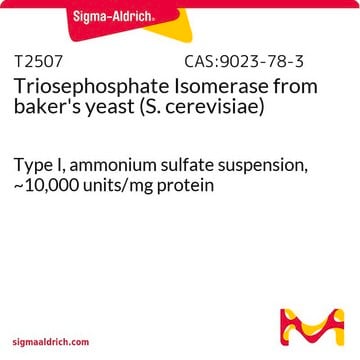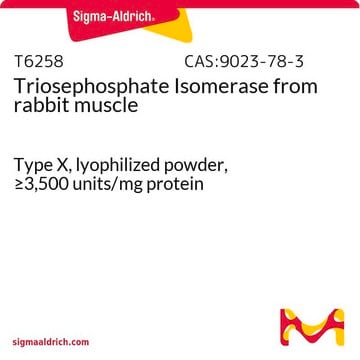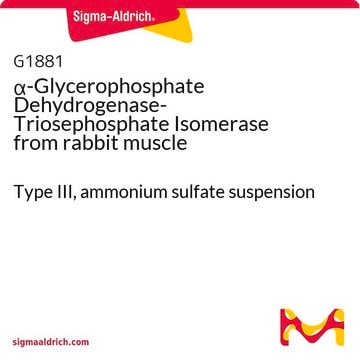R0878
D-Ribulose 1,5-bisphosphate sodium salt hydrate
≥90% (TLC)
Sinónimos:
D-erythro-2-Pentulose, 1,5-bis(dihydrogen phosphate), D-Ribulose 1,5-diphosphate, RuDP
About This Item
Productos recomendados
biological source
synthetic (inorganic)
assay
≥90% (TLC)
form
powder
impurities
≤16% water (Karl Fischer)
color
white
solubility
water: ~50 g/L
cation traces
Na: 17.1-24.6% (dry basis)
storage temp.
−20°C
InChI
1S/C5H12O11P2/c6-3(1-15-17(9,10)11)5(8)4(7)2-16-18(12,13)14/h3,5-6,8H,1-2H2,(H2,9,10,11)(H2,12,13,14)/t3-,5-/m1/s1
InChI key
YAHZABJORDUQGO-NQXXGFSBSA-N
¿Está buscando productos similares? Visita Guía de comparación de productos
Application
- Bio-Inspired Microreactors Continuously Synthesize Glucose Precursor from CO(2) with an Energy Conversion Efficiency 3.3 Times of Rice.: This study leverages D-Ribulose 1,5-bisphosphate sodium salt hydrate in bio-inspired microreactors to synthesize glucose precursors from CO₂. The approach demonstrates an energy conversion efficiency significantly higher than that of rice, highlighting its potential for efficient carbon fixation and bioengineering applications (Zhu et al., 2024).
- Designing Stacked Assembly of Type III Rubisco for CO₂ Fixation with Higher Efficiency.: The research utilizes D-Ribulose 1,5-bisphosphate sodium salt hydrate to enhance the efficiency of CO₂ fixation through the stacked assembly of Type III Rubisco. This innovative approach offers improvements in metabolic engineering for carbon capture and utilization (Zeng et al., 2022).
- Continuous artificial synthesis of glucose precursor using enzyme-immobilized microfluidic reactors.: This study explores the continuous synthesis of glucose precursors using microfluidic reactors with immobilized enzymes, including D-Ribulose 1,5-bisphosphate sodium salt hydrate. The technique demonstrates potential for scalable biochemical production processes (Zhu et al., 2019).
Biochem/physiol Actions
Other Notes
Storage Class
11 - Combustible Solids
wgk_germany
WGK 3
flash_point_f
Not applicable
flash_point_c
Not applicable
ppe
Eyeshields, Faceshields, Gloves, type P2 (EN 143) respirator cartridges
Certificados de análisis (COA)
Busque Certificados de análisis (COA) introduciendo el número de lote del producto. Los números de lote se encuentran en la etiqueta del producto después de las palabras «Lot» o «Batch»
¿Ya tiene este producto?
Encuentre la documentación para los productos que ha comprado recientemente en la Biblioteca de documentos.
Los clientes también vieron
Nuestro equipo de científicos tiene experiencia en todas las áreas de investigación: Ciencias de la vida, Ciencia de los materiales, Síntesis química, Cromatografía, Analítica y muchas otras.
Póngase en contacto con el Servicio técnico














